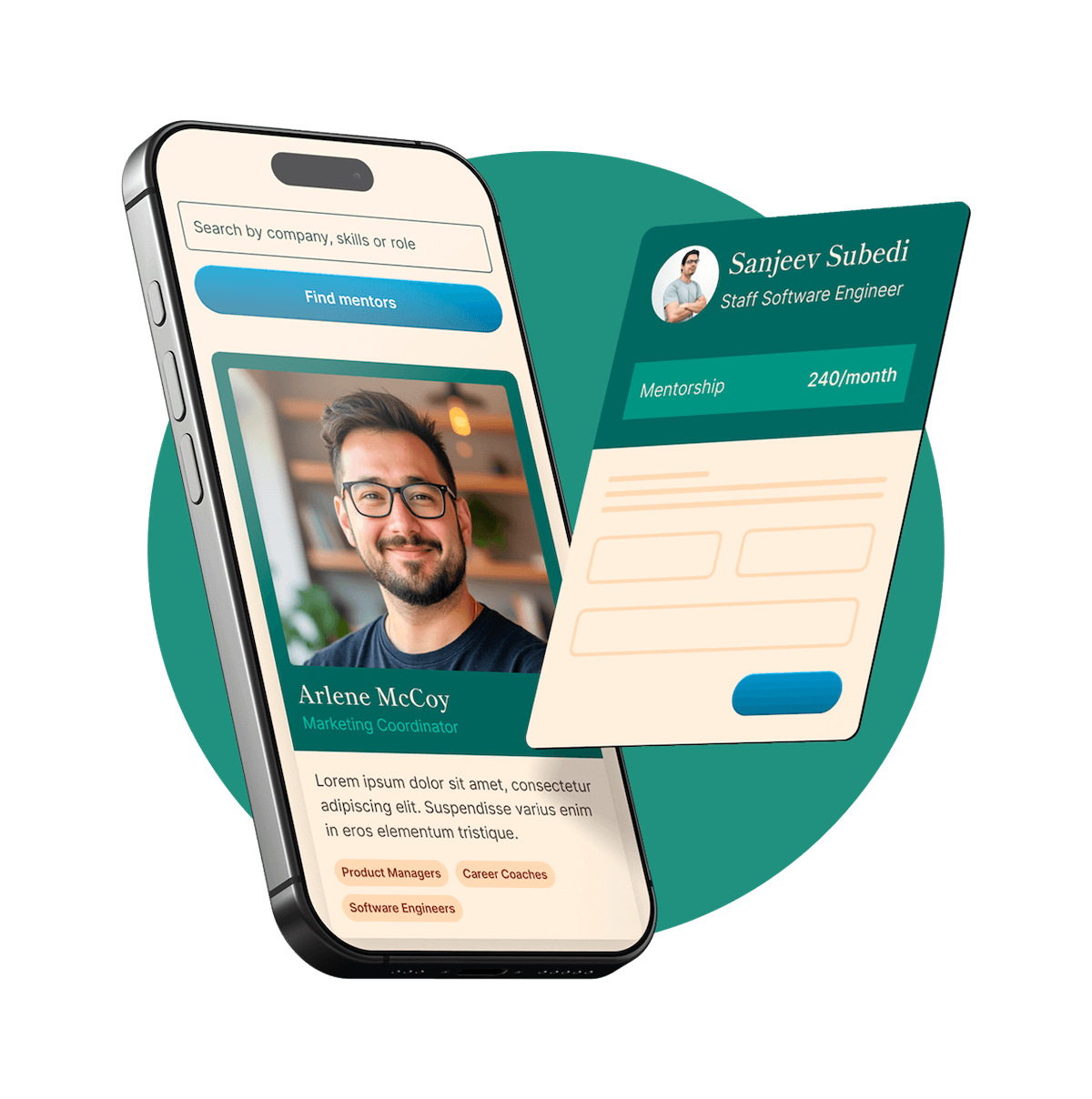DEIB.
Diversity, Equity, Inclusion, Belonging.
The phrase has been popping up over the last few years, specifically in workplace discussions, job descriptions, and corporate initiatives.
But what exactly does that mean these days? What does DEIB mean, and why has it become such a critical focus for organizations of all sizes?
This comprehensive guide will unpack the DEIB meaning, explore why it matters in today's workplace, and provide practical strategies for implementing effective DEIB initiatives in your organization.
Whether you're an HR professional, a team leader, or someone simply looking to contribute to a more inclusive workplace, I'll equip you with the knowledge and tools to navigate this important area.
What is the DEIB meaning?

DEIB stands for Diversity, Equity, Inclusion, and Belonging.
While these four concepts are interconnected, each represents a distinct and essential component of creating a workplace where all employees can thrive.
Let's break down each element of the DEIB meaning:
Diversity
Diversity refers to the presence of differences within a given setting. In the workplace, this means having a workforce comprising people with varying characteristics, backgrounds, and perspectives. These differences can include:
- Race and ethnicity
- Gender and gender identity
- Sexual orientation
- Age
- Physical abilities and disabilities
- Socioeconomic background
- Religious beliefs
- Political perspectives
- Educational background
- Geographic location
- Language
- Family status
- Military experience
- Thinking and communication styles
True diversity goes beyond simply checking demographic boxes—it encompasses the full range of human differences that make each person unique.
Equity
Equity is often confused with equality, but they're distinct concepts. While equality means providing the same resources to everyone, equity recognizes that people have different starting points and barriers to overcome.
The equity component of DEIB meaning focuses on:
- Identifying and removing barriers that prevent full participation
- Ensuring fair access to opportunities
- Providing resources based on individual or group needs
- Creating systems that distribute power and influence more evenly
- Addressing historical and systemic disadvantages
In practice, equity might mean offering flexible work arrangements for parents, providing additional mentoring for underrepresented groups, or ensuring your hiring processes don't inadvertently disadvantage specific candidates.
Inclusion
While diversity addresses who is in the room, inclusion focuses on how people experience the environment once they're there. Inclusion refers to the deliberate effort to ensure all people feel welcomed, respected, and valued for their contributions.
Inclusion within the DEIB meaning encompasses:
- Creating environments where everyone feels welcome to participate
- Ensuring all voices are heard and considered in decision-making
- Actively seeking out and valuing different perspectives
- Removing barriers to participation
- Creating psychological safety for all team members
An organization might be diverse but not inclusive if underrepresented employees don't feel comfortable speaking up or if their ideas aren't taken seriously.
Belonging
Belonging is the newest addition to what was previously known as "DEI," and it adds a crucial emotional dimension to the DEIB meaning. Belonging is the feeling that you can bring your authentic self to work and still be accepted as a valued member of the organization.
Belonging involves:
- Feeling connected to the organization and its mission
- Being able to be authentic without fear of negative consequences
- Having your unique contributions recognized and appreciated
- Experiencing a sense of shared purpose with colleagues
- Feeling that you matter to the organization
When people feel they belong, they experience greater job satisfaction, higher engagement, and improved performance.
Why does DEIB matter in the workplace?

Understanding the DEIB meaning is just the beginning. Why has DEIB become such a priority for forward-thinking organizations?
The reasons extend far beyond compliance or public relations—DEIB initiatives deliver tangible benefits for employees, organizations, and society as a whole.
Business performance benefits
Research consistently demonstrates that organizations with strong DEIB practices outperform their competitors:
- Enhanced innovation: Diverse teams bring together varied perspectives, leading to more creative problem-solving and innovation. A Boston Consulting Group study found that companies with above-average diversity on their management teams reported innovation revenue 19 percentage points higher than companies with below-average leadership diversity.
- Better decision-making: Teams with diverse perspectives are less likely to fall into groupthink and more likely to consider a wider range of options. Research shows diverse teams make better decisions up to 87% of the time.
- Improved financial performance: Companies in the top quartile for gender diversity on executive teams are 25% more likely to have above-average profitability than companies in the fourth quartile, according to McKinsey research.
- Expanded market reach: Organizations with diverse workforces better understand and serve diverse customer bases, opening up new market opportunities.
Talent acquisition and retention
Talent is everything these days. You're aiming to be one of the most sought-after in your industry, and companies want the best of the best working for them. To both sides, DEIB has become an important decision factor in this process.
- Attraction of top talent: 76% of job seekers report that diversity is an important factor when evaluating companies and job offers.
- Reduced turnover: Employees who feel included and belong are more likely to stay with an organization, reducing costly turnover.
- Access to a broader talent pool: Organizations with strong DEIB practices can tap into previously overlooked talent sources.
- Enhanced employer brand: Companies known for inclusive cultures often become employers of choice in their industries.
Employee experience and engagement
The impact of DEIB on employee experience cannot be overstated:
- Increased engagement: Employees who feel included are more engaged—contributing discretionary effort and going above and beyond their basic job requirements.
- Greater psychological safety: Inclusive environments foster psychological safety, enabling employees to take risks, speak up, and innovate without fear of embarrassment or rejection.
- Improved collaboration: When people feel they belong, collaboration improves as employees feel more comfortable sharing ideas and working together across differences.
- Better mental health: Inclusive workplaces report lower stress levels and burnout among employees.
Social impact and responsibility
Beyond organizational benefits, DEIB initiatives contribute to broader social change:
- Addressing systemic inequities: Workplace DEIB efforts help counteract historical and systemic inequities in society.
- Meeting stakeholder expectations: Customers, investors, and community members increasingly expect organizations to demonstrate meaningful commitment to DEIB.
- Creating ripple effects: Inclusive workplaces influence how employees interact in their communities, creating a broader social impact.
Common challenges in understanding and implementing DEIB

Even with a clear understanding of the DEIB meaning, organizations often encounter challenges in implementation. Recognizing these obstacles is the first step toward addressing them:
Resistance to change
Some employees may resist DEIB initiatives due to:
- Misunderstanding DEIB as a zero-sum game where some must lose for others to gain
- Fear of being replaced or disadvantaged
- Discomfort with examining privilege and bias
- Perception that DEIB efforts are politically motivated rather than business-driven
Superficial approaches
Many organizations struggle with the following:
- "Checkbox" diversity that focuses on numbers without addressing inclusion or belonging
- One-time training sessions without sustained follow-up
- Symbolic gestures without substantive policy or cultural changes
- Failure to address systemic issues within organizational structures
Measurement challenges
DEIB initiatives can be difficult to measure:
- Quantitative metrics may miss qualitative experiences of inclusion and belonging
- Long-term nature of cultural change makes short-term ROI difficult to demonstrate
- Sensitive nature of demographic data collection raises privacy concerns
- Difficulty isolating DEIB impact from other organizational factors
Leadership alignment
Organizations often struggle with:
- Inconsistent commitment across leadership
- Delegating DEIB solely to HR rather than integrating it across all functions
- Disconnect between stated values and leadership behaviors
- Insufficient resources allocated to DEIB efforts
How to approach DEIB in your workplace: A framework

With the meaning and importance in mind, let's take a little dive into how organizations can and are implementing effective DEIB initiatives through a comprehensive framework:
1. Assessment and foundation-building
Before launching initiatives, establish a clear understanding of your current state:
- Data collection: Gather demographic data on your workforce across levels and functions, while respecting privacy and confidentiality.
- Experience assessment: Conduct surveys, focus groups, or interviews to understand the lived experiences of different employee groups.
- Systems audit: Examine policies, procedures, and practices that may inadvertently create barriers or inequities.
- Leadership alignment: Ensure leadership understands the DEIB meaning and business case and is committed to meaningful change.
- Establish baseline metrics: Determine what success looks like and how you'll measure progress.
2. Strategy development
With a clear understanding of your starting point, develop a comprehensive strategy:
- Articulate a compelling vision: Define what successful DEIB implementation would look like for your specific organization.
- Set specific goals: Establish both short and long-term objectives that address your organization's particular challenges.
- Identify priority areas: Based on your assessment, determine the most critical areas for initial focus.
- Develop an implementation roadmap: Create a phased approach with clear milestones.
- Allocate resources: Ensure sufficient budget, personnel, and leadership attention.
3. Culture and leadership development
Sustainable DEIB requires cultural change, beginning with leadership:
- Leadership capability building: Provide training and coaching to help leaders model inclusive behaviors and address bias.
- Accountability mechanisms: Incorporate DEIB objectives into performance evaluations and compensation structures for leaders.
- Communication strategy: Develop clear, consistent messaging about the importance of DEIB and progress on initiatives.
- Change management: Apply change management principles to support cultural evolution.
4. Policy and system changes
Examine and reform organizational systems to remove barriers:
- Talent acquisition: Review job descriptions, sourcing strategies, interview processes, and selection criteria to minimize bias.
- Performance management: Ensure evaluation processes and criteria are equitable and don't inadvertently favor particular groups.
- Compensation: Conduct pay equity analyses and address disparities.
- Promotion and development: Create transparent pathways for advancement and ensure equal access to development opportunities.
- Flexible work: Implement policies that accommodate diverse needs and life circumstances.
5. Education and awareness
Build knowledge and skills across the organization:
- Foundational training: Provide education on key DEIB concepts, including the full DEIB meaning, unconscious bias, microaggressions, and cultural competence.
- Role-specific training: Offer targeted training for people managers, hiring managers, and other key roles.
- Ongoing learning: Create mechanisms for continuous education rather than one-time events.
- Experiential learning: Supplement formal training with opportunities for dialogue, reflection, and experiential activities.
6. Community and belonging initiatives
Foster connection and belonging through:
- Employee resource groups: Support the development of ERGs or affinity groups to provide community, mentorship, and advocacy.
- Mentoring programs: Create formal and informal opportunities for cross-cultural mentoring and sponsorship.
- Inclusive events and celebrations: Acknowledge diverse holidays, heritage months, and cultural traditions.
- Allyship programs: Educate employees on how to be effective allies to underrepresented colleagues.
7. External Engagement
Extend DEIB efforts beyond your organization:
- Supplier diversity: Develop relationships with diverse suppliers and vendors.
- Community partnerships: Form relationships with community organizations serving underrepresented groups.
- Industry leadership: Share best practices and advocate for DEIB within your industry.
- Transparency: Publish diversity reports and share progress publicly.
8. Measurement and Accountability
Maintain momentum through continuous assessment:
- Regular data collection: Update demographic and experience data regularly.
- Progress tracking: Measure progress against established goals and metrics.
- Accountability reporting: Share results with leadership, employees, and potentially external stakeholders.
- Continuous improvement: Use findings to refine your approach and address emerging challenges.
Practical DEIB strategies for different organizational roles

Understanding the DEIB meaning and framework is important, but how does it translate to specific organizational roles? Here are practical approaches for different stakeholders:
For executive leadership
- Publicly commit to DEIB as a business imperative, not just a compliance activity
- Allocate adequate resources (budget, personnel, time) to DEIB initiatives
- Incorporate DEIB metrics into organizational strategy and leadership scorecards
- Model vulnerability by sharing your own learning journey
- Hold direct reports accountable for DEIB progress in their areas
For HR professionals
- Partner with leadership to develop and implement the DEIB strategy
- Review and revise talent processes to reduce bias and increase equity
- Provide guidance on appropriate metrics and measurement approaches
- Develop or curate effective learning opportunities
- Ensure policies and benefits support diverse needs
For middle managers and team leaders
- Create psychological safety within your team
- Address microaggressions and exclusionary behaviors promptly
- Distribute opportunities, visibility, and recognition equitably
- Solicit input from all team members and ensure all voices are heard
- Expand your network to include more diverse perspectives
For individual contributors
- Practice active allyship by amplifying underrepresented voices
- Seek to understand experiences different from your own
- Participate actively in DEIB learning opportunities
- Speak up when you observe exclusionary behaviors
- Join or support employee resource groups
Case Studies: DEIB Success Stories

Understanding the DEIB meaning in theory is enhanced by seeing successful implementation in practice.
Here are brief examples of organizations that have approached DEIB effectively:
Accenture: Comprehensive goal-setting
Accenture has set specific, measurable goals for increasing diversity at all levels, including achieving gender parity in its workforce by 2025.
The company publishes its workforce demographics annually and ties executive compensation to diversity goals. This transparent approach has helped Accenture make steady progress and establish credibility in its DEIB commitment.
Microsoft: Inclusive Product Design
Microsoft integrated DEIB into its product development process through its Inclusive Design framework.
By considering users with diverse abilities, backgrounds, and needs during the design phase, Microsoft has created more accessible products while embedding DEIB thinking into its core business operations rather than treating it as a separate initiative.
Sodexo: Measuring ROI
Sodexo conducted a comprehensive study examining the relationship between gender balance in management and key performance indicators.
The study found that teams with gender-balanced management had better financial performance, employee engagement, brand awareness, and client retention. By quantifying the business impact, Sodexo strengthened the case for continued DEIB investment.
Ben & Jerry's: Social Justice Integration
Ben & Jerry's has integrated social justice advocacy into its brand identity and business operations.
The company has taken public stands on racial justice issues, launched products that raise awareness about social causes and implemented inclusive hiring practices, demonstrating how DEIB can extend beyond internal workforce initiatives to encompass broader social impact.
The future of DEIB in the workplace
As workplace dynamics continue to evolve, the application of DEIB meaning and practices will also evolve. Here are some emerging trends to watch:
Integration with wellbeing
Organizations are increasingly recognizing the connection between DEIB and employee well-being, developing more holistic approaches that address both physical and psychological safety.
Technology's dual role
AI and other technologies offer new opportunities for reducing bias in hiring and promotion decisions while simultaneously creating risks of algorithmic bias that must be carefully managed.
Intersectionality focus
The most advanced DEIB programs are moving beyond single-dimension approaches to address how multiple aspects of identity interact, creating unique experiences and challenges for individuals with overlapping marginalized identities.
Global contextualization
As organizations operate across borders, they're developing more sophisticated approaches to adapting DEIB initiatives to different cultural and legal contexts while maintaining core principles.
Measurement evolution
New techniques for measuring inclusion, belonging, and equity are emerging, allowing organizations to track progress more effectively and make data-driven decisions about DEIB investments.
Wrapping up
Let's be clear: DEIB isn't a checkbox. It's not a one-time training. It's not even a destination.
It's a fundamental business imperative that never ends.
The most successful organizations don't just understand the DEIB meaning—they live it. They recognize that diversity without equality creates frustration. Inclusion without belonging breeds disengagement. Each element depends on the others.
Winners in today's talent war don't relegate DEIB to HR initiatives or diversity days. They weave it into their DNA—their decision-making, systems, leadership behaviors, and strategic priorities.
The result?
Workplaces where innovation thrives because different perspectives aren't just present—they're actively sought out and valued.
Here's the hard truth: Most organizations are stuck in DEIB buzzword territory.
They talk a good game. They post the right hashtags. But they struggle to translate concepts into concrete change that employees actually feel.
The difference between DEIB as window dressing and DEIB as competitive advantage? Expert guidance.
This is where MentorCruise comes in.
Our platform connects you with battle-tested DEIB leaders who've driven real transformation across industries. These aren't theoretical consultants—they're practitioners who've navigated the exact challenges you're facing.
Whether you need to build personal DEIB leadership capabilities, design a comprehensive organizational strategy, or troubleshoot specific implementation roadblocks, our mentors provide the personalized guidance that generic training programs can't deliver.
Ready to move from DEIB intention to impact?
Find your DEIB mentor at MentorCruise today and transform understanding into action that your employees, customers, and stakeholders will actually notice.






